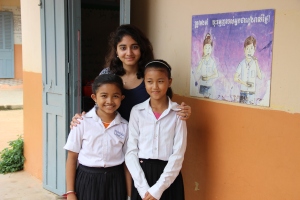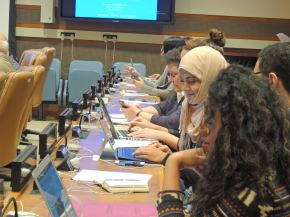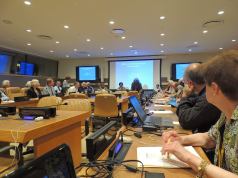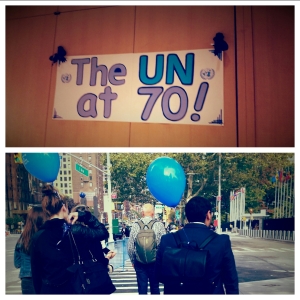Contributed by Marina Raoilimanantsoa
The DPI-NGO briefing that took place on the 3rd of December 2015 was held to mark the 50th anniversary of the International Convention on the Elimination of all forms of Racial Discrimination (ICERD) and to launch the International Decade for People of African Descent.
The panel included NGO workers and academics all from minority groups; however, as part of the audience, I felt like the panelists failed to bring the topic to life. That was a pity because the theme is so important and sadly as relevant as it was 50 years ago.

Another striking aspect of the briefing for me was that I got the sense that the discussions, unintentionally I’m sure, sort of framed the issue of racism and racial discrimination as the problem of certain groups while in reality, every individual, every group should be concerned with it, and should be called upon if we really want to put an end to it.
Social groups that are traditionally considered as the “oppressors” were underrepresented in the panel and the larger discussion. Perhaps it’s because there is some uneasiness and discomfort for members of the so-called “dominant” or majority groups to openly discuss issues pertaining to racism.
But in my humble opinion, discussions on the way out of racism should be inclusive of those that are oppressed by systemic racism and those that benefit from it. In the same way, as pointed out by Stephanie Franklin, one of the panelists, instruments such as the ICERD are ironically not accessible to the peoples that need it the most because due to their underprivileged status, they usually happen to have less resources, less education to know the existence of such a convention and what it means for them.
I felt like on the whole, the irony about the fight against racial discrimination is that generally, it is only a concern for those who are directly affected by it, it is a problem of people of color. It’s in the nature of the problem itself that it only affects certain groups, but a paradigm shift has to happen in conceiving the issue as our problem as members of humanity and no longer their problem. Systemic racism is at the root of inequalities in so many dimensions of this world, the achievement of the global goals is tied up to addressing systemic racism. So yes, it is a universal problem in the way that it should concern all of us, and everywhere.
Thus, just as we all were enthusiastic in pledging to achieve the new SDGs a couple of months ago, we should be as committed in addressing perhaps one of the core factors that put in place and maintained global and local inequalities throughout the world.
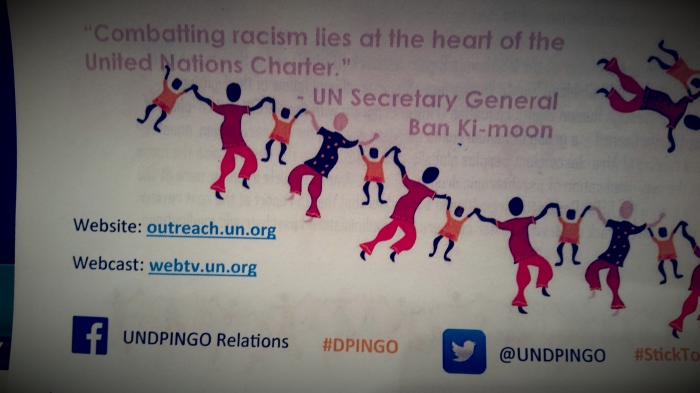
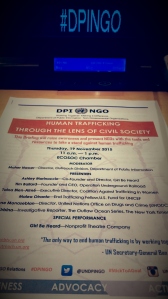 I have to admit that prior to that session, I myself was not fully aware of what the phrase “human trafficking” encompasses. So at a personal level, the discussions were very informative for me, I became better aware, among other things, of the different forms human trafficking takes, its dimensions, and its interlinkages with other issues such as drug trafficking or terrorism.
I have to admit that prior to that session, I myself was not fully aware of what the phrase “human trafficking” encompasses. So at a personal level, the discussions were very informative for me, I became better aware, among other things, of the different forms human trafficking takes, its dimensions, and its interlinkages with other issues such as drug trafficking or terrorism.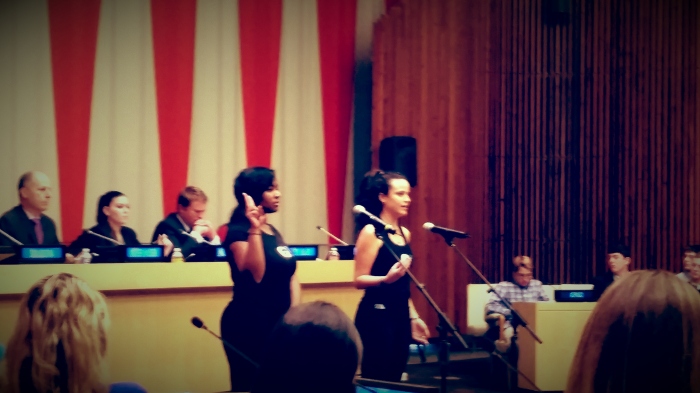
 didn’t take me long to know that I’d like to know and write about her story.
didn’t take me long to know that I’d like to know and write about her story.